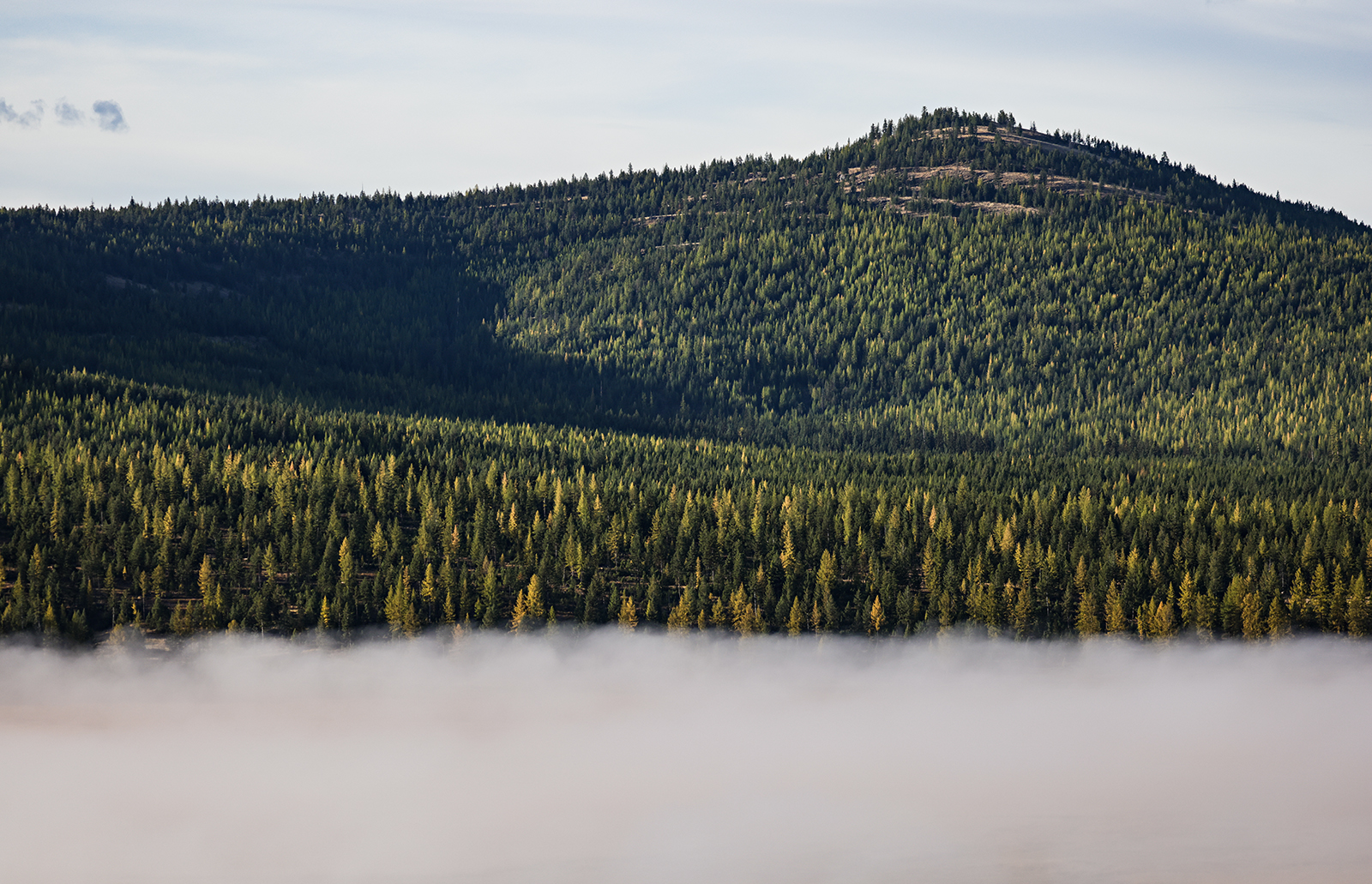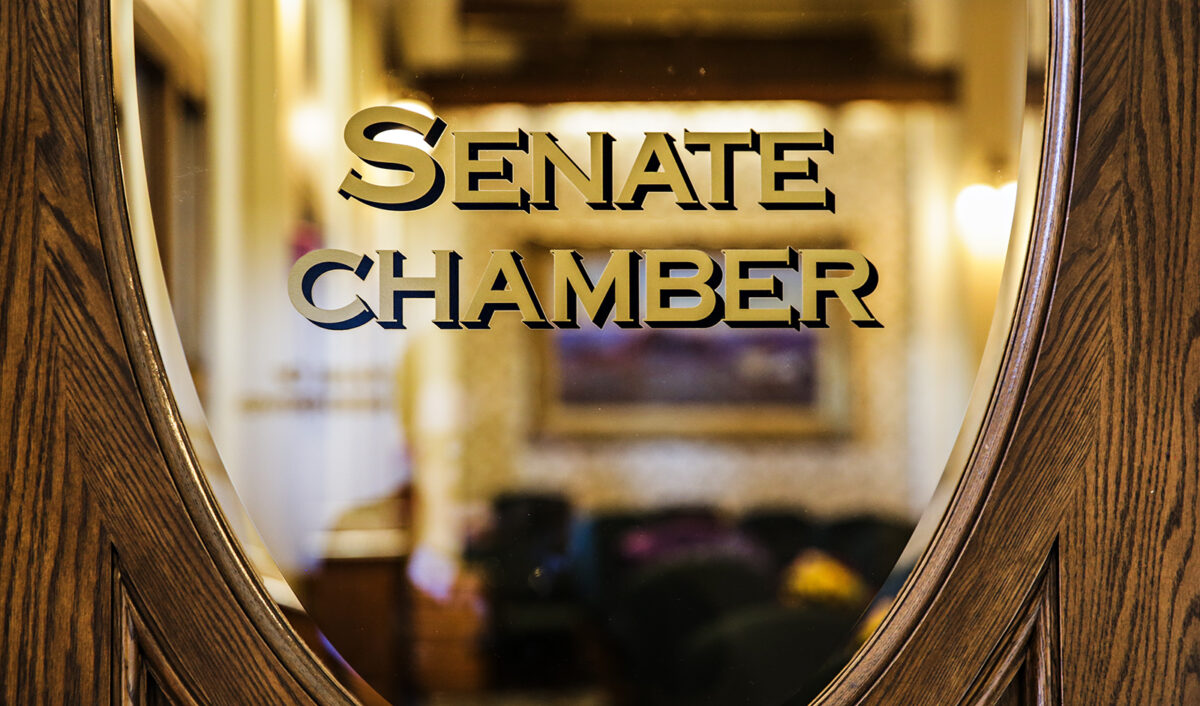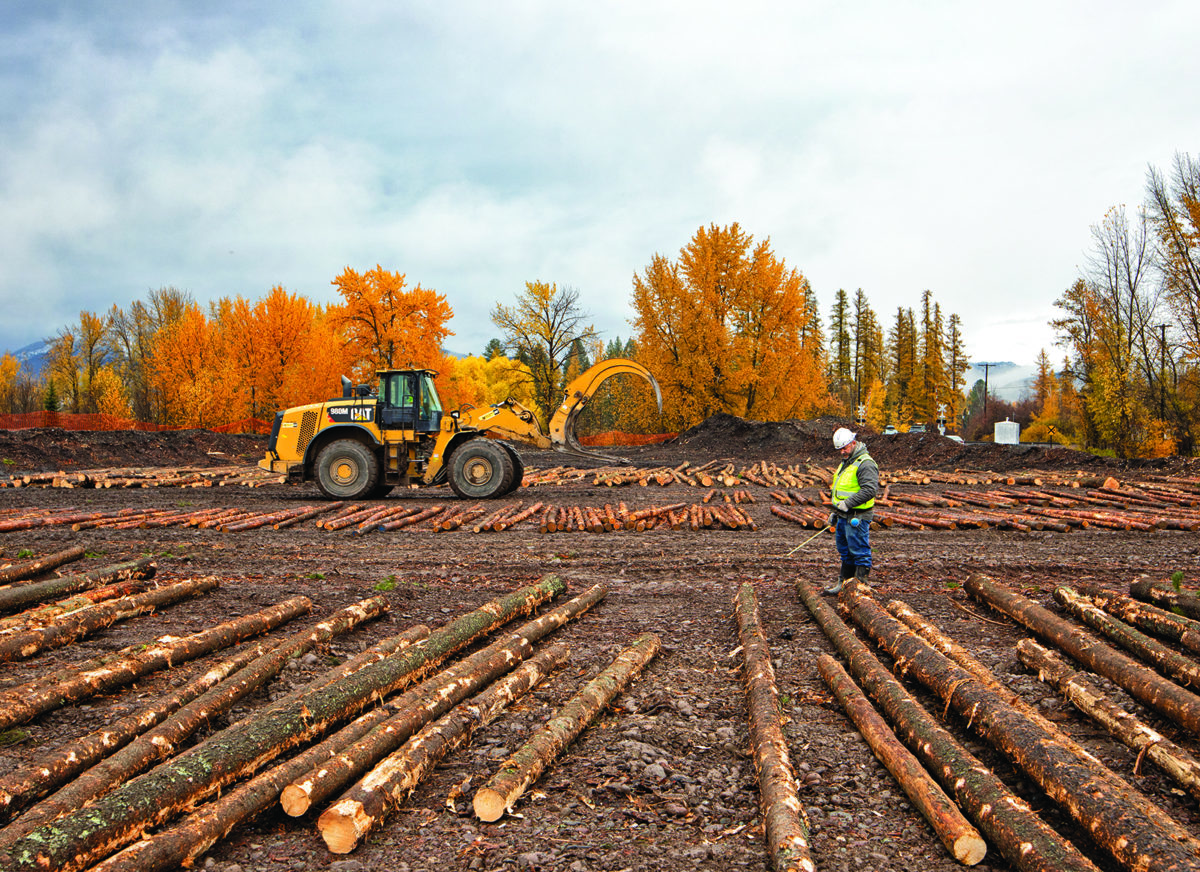Ennis Lawmaker Tables Bill to Restrict Perpetual Conservation Easements in Montana
In a demonstration of the popularity of private land conservation, Sen. Tony Tezak, R-Ennis, offered to kill his bill to limit the terms of conservation easements to 40 years. He then allowed dozens of people to testify against his own measure, including ranch families, timber interests, hunting and fishing advocates, and business leaders.
By Tristan Scott
During opening remarks Tuesday to introduce a bill aimed at restricting the terms of perpetual conservation easements in Montana, a Republican lawmaker from Ennis offered to table the measure before inviting dozens of opponents to the podium to testify against it.
In what amounted to a referendum on the sanctity of private property rights and the critical need for perpetual easements to preserve Montana’s working lands — as well as furnish them with public access — the opponents to Senate Bill 209 included ranch families, agricultural producers, hunting and fishing advocates, timber interests, business leaders, and conservationists, all of whom thanked Sen. Tony Tezak for agreeing to kill the bill before decrying it as an affront on their way of life.
Those appeals did not fall on deaf ears, particularly as Tezak, a rancher and agricultural producer whose Senate District 35 includes portions of Madison and Beaverhead counties in southwest Montana, said he crafted SB 209, which would have limited the terms of perpetual conservation easements to 40 years, based on “my desire to protect our Montana way of life.” However, after conversations with Kendall Van Dyk, of the nonprofit Montana Land Reliance, which helps multi-generational Montana ranchers preserve their succession of land ownership, Tezak said he had a change of heart.
“In consideration of a workable solution, which I believe can achieve our main objectives and goals, I have regrettably decided to table this bill,” Tezak said Tuesday. “With respect to … the committee and your time, I ask that we can still hear testimony because there is a lot of passion on both sides of this legislation.”
Those passions emerged during hours-long testimony before the Senate Judiciary Committee, whose chairman, Sen. Barry Usher, R-Billings, called on more than 45 opponents to Tezak’s measure, as well as two proponents — representatives of Citizens for Balanced Use and United Property Owners of Montana, which advocate on behalf of private property owners’ rights and interests.
Van Dyk, the managing director of Montana Land Reliance, which partners with private landowners to permanently protect agricultural lands, fish and wildlife habitat, and open space, said Tezak’s decision to table the bill is “a demonstration that in Montana, there is still more that unites us than divides us.”
“Sen. Tezak’s heart is clearly in production agriculture. I don’t think his opinion about perpetuity necessarily has changed, but he concluded that as drafted, this would end a model of private land conservation that’s beneficial to ag folks and many of his constituents,” Van Dyk said in an email Wednesday. “He demonstrated a lot of statesmanship yesterday, something we all wish was more common these days. What he did was not easy — he’s a good public servant. From our perspective we also hope yesterday was a real demonstration of the popularity and importance of private land conservation moving forward.”
Tezak did not respond to the Beacon’s requests for an interview in time for this article’s publication deadline.
Stakeholders who testified against SB 209 included landowners with timber interests in northwest Montana, as well as fourth- and fifth-generation ranchers in eastern and southwest Montana struggling to safeguard their land against intensifying development pressures.
Barry Dexter, director of resources at Stimson Lumber Company, which owns 130,000 acres of timberland in northwest Montana and has been around since the 1850s, said the company invested in Montana timberland “in part due to the staunch support in the state of private property rights.”
“We have enrolled most of our Montana timberland into Forest Legacy Conservation Easements. But a Forest Legacy Conservation Easement requires permanence,” he said, describing the easements as among “the most important tools to maintain what remains of the private timber base in Montana.”
“Stimson views placing its timberland into conservation easements as a voluntary action and a fundamental private property right,” Dexter said. “Stimson also believes that it’s the landowner’s own property right to determine the term life of a conservation easement. After all, who knows the property better than the landowner?”
Cooper Hibbard, who manages his family’s ranch between Helena and Great Falls, said a perpetual conservation easement has been a critical planning tool to mitigate estate taxes as the family engineered a plan to transfer the property’s ownership to the next generation.
“Ranchers and farmers are asset rich and cash poor,” Hibbard said. “We sit on land that is valued infinitely higher than its actual ability to produce revenue. Therefore, when a family tries to transfer land from one generation to the next, it becomes a challenge to pay taxes without selling off assets, which is usually either the ranch or farm itself, or chunks of it.”
Jason Callahan, policy and communications manager for Green Diamond Resources Company, said the Seattle-based company’s decision to purchase more than 300,000 of Montana timberland in 2021 hinged on its ability to enroll the land into permanent conservation easements.
“We have what we consider a generational investment,” he said. “What the conservation easements allow us to do is pay for that forest while it comes back into production. It needs time to rest. It needs time to heal,” Callahan said. “It’s going to take 15 or 30 years before the forest can pay for itself. Conservation easements allow us to keep the lights on, do forest health work, do fire resiliency work, pay our staff, pay our contractors, get some fiber to the mills. All that is made possible by monetizing the development rights into conservation and into forestry instead of into development, and that allows us to keep the corpus of our land in working forests.”

Julia Altemus, executive director of the Montana Wood Products Association, said the state’s 850,000 acres of industrial private timberland all have conservation easements on them, and all produce timber.
“We rely on those timber harvests coming to the mills,” she said, adding that Montana has lost 36 mills since 1990, with two mills shuttering last year alone. “We’re down to six. And last year, our state trust lands gave $9 million to the school trust from the work we do to harvest timber on these private lands. If the mills are not here and the loggers are not here because the supply is not here, that money will not go to the trust and those state timberlands will be almost worthless. These conservation easements are really important to my members.”
One of those members is Paul McKenzie, general manager of F.H. Stoltze Land and Lumber Company in Columbia Falls, which is in its 113th year of operation. Stoltze owns a sawmill with 120 direct employees on its payroll, producing enough lumber to build about 5,000 homes per year. Stoltze’s biomass-fueled electric generation facility also produces about 2.5 megawatts of renewable energy annually. Of the 40,000 acres of timberland it owns in northwest Montana, 11,000 acres is enrolled in permanent conservation easements.
“I really question what benefit this bill would bring to the state of Montana. The track record of large-scale permanent working land conservation easements in northwest Montana is clear. These easements are helping perpetuate a way of life that includes healthy forests, healthy families, and healthy communities. They have been a critical tool for Stoltze and many of our landowning partners.”

Tezak’s SB 209 isn’t the first proposal to take aim at permanent conservation easements.
In 2023, Senate Bill 357 sought to put a 40-year term limit on many conservation easements purchased with state funding by agencies such as Montana, Fish, Wildlife and Parks (FWP). The measure included exceptions for easements that are smaller than 1,500 acres or purchased with Forest Legacy Program funds. It was tabled in committee
In 2021, Senate President Matt Regier, R-Kalispell, proposed legislation as a representative to eliminate FWP’s ability to use hunting access fees to acquire fee title lands, which is the lifeblood that allows FWP’s Habitat Montana program to function.
Now more than three decades old, FWP’s Habitat Montana program doesn’t draw on the state’s general fund for any of its money. Instead, it’s funded by an excise fee on hunting licenses, which in turn is used to broker conservation easements with willing landowners who also provide public hunting access, as well as fee title purchases of land with high wildlife values and for new fishing access sites, examples of which abound in the Flathead Valley.
Regier ultimately withdrew the bill.
As one of two proponents to support SB 209 on Tuesday, Charles Denowh spoke on behalf of the United Property Owners of Montana, saying his concerns with perpetual conservation easements center on the landowners who are shortchanged by the terms of their agreements.
“Landowners are not receiving the full value for their easements when it’s in such a long-time horizon situation like a perpetual easement,” Denowh said. “Since conservation easements have been around beginning in 1980, the value of land has gone up four fold. How many times have you heard a landowner come in and say, ‘the conservation easement allowed us to save the ranch. It allowed our family to stay on the land.’? That doesn’t sound like a willing seller; it sounds like a distressed seller.”
That didn’t sit right with Denny Iverson, whose family has put three conservation easements on its Potomac property since 2006.
“Had I waited until now, we would have got more. But if we’d subdivided the ranch in 2006, I still would have looked back and wished I’d waited until 2024,” he said. “Values always go up. If you’re doing it for the money, you’re doing it for the wrong reason. Because this is a long-term decision. But I can tell you that our ranch is worth a whole lot more today even with a conservation easement on it than it was worth in 2006.”
Blake Henning, the chief conservation officer at the Rocky Mountain Elk Foundation, said conservation easements uphold private property rights and are a critical tool for hunter-driven conservation across the state.
Since its in 1984 in Troy, the Rocky Mountain Elk Foundation has worked with more than 40 Montana families to keep their ranch and timberlands working and open with perpetual conservation easements.
“Easements aren’t for everyone, but they need to be an option for the landowners we work with here in Montana and beyond,” Henning said Tuesday. “And I thank Senator Tezak for tabling this bill.”